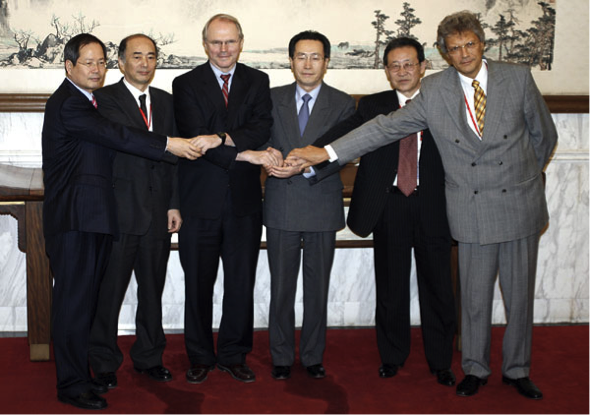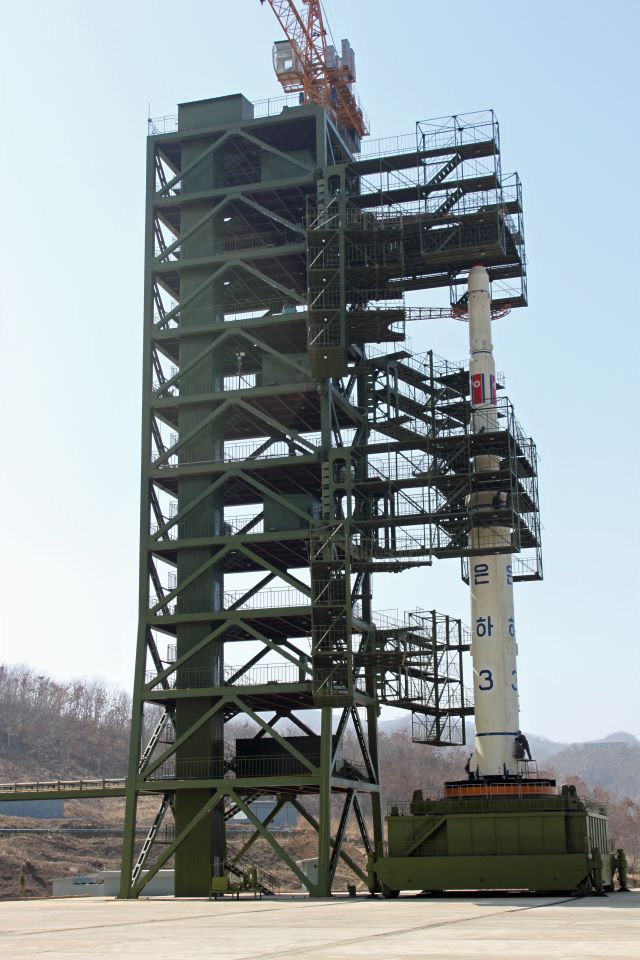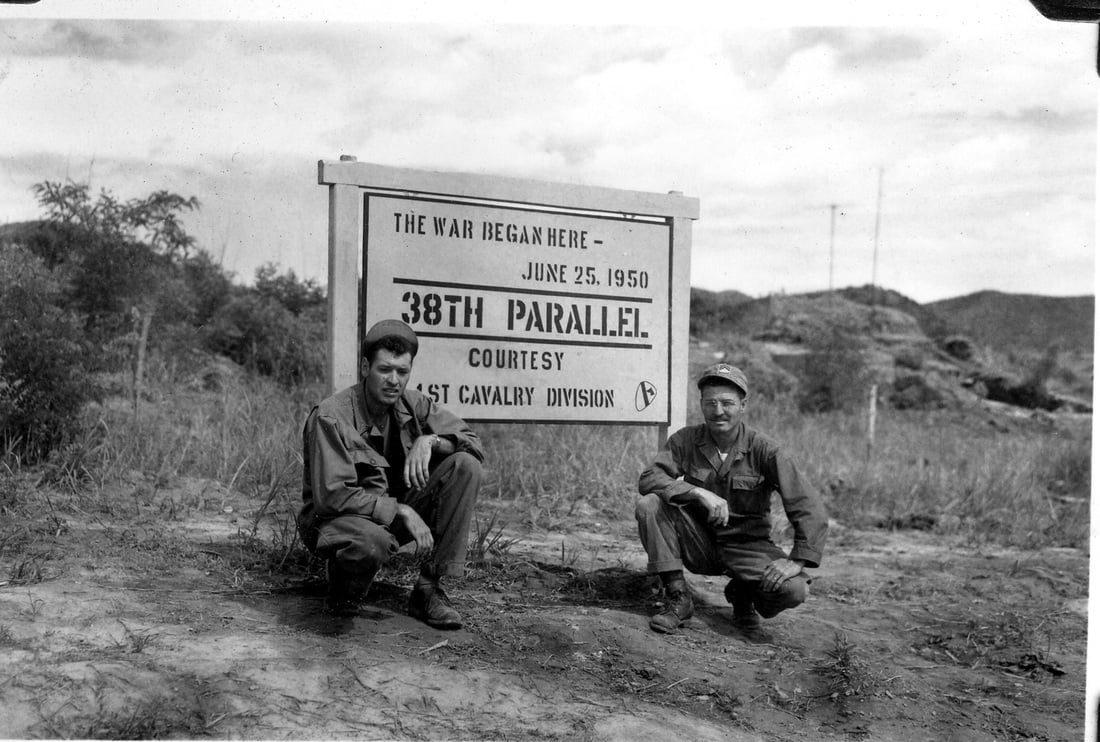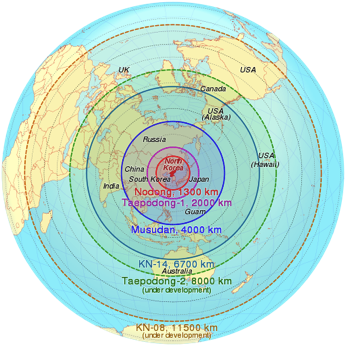
The following is a brief outline of the history of the development of nuclear weapons by North Korean regime.
July 7, 1953
A Divided Korea
After years of escalating American troop presence, an armistice officially divides Korea along the 38th parallel into a communist North and capitalist South.
1956
Scholarly Exchange
In conversation, Kim Il Sung said that Korean scientists have long raised the question to us of getting an opportunity to work in the field of nuclear research, to which we told them that when the opportunity and need arise such conditions will be created, and the USSR will not forget us in this. — Journal of Soviet Ambassador to the DPRK V. I. Ivanov for 20 January 1956, via Wilson Center
The Soviet Union begins training North Korean scientists and engineers, laying the foundation for future nuclear development.
1959
Nuclear Cooperation Agreement
North Korea and the Soviet Union sign a cooperation agreement under which the Soviet Union would provide basic nuclear training and technology to its Korean allies. The agreement spawns plans for a nuclear facility near Yongbyon that would later become a flashpoint with the US.
1962
Spinning Up Research
North Korea completes the Yongbyon Nuclear Research Centre, which includes an IRT-2000 research reactor.
1963
On the Market
Our comrades are trying to express a thought to the Koreans to the effect that it would be much easier for the economy of the DPRK to satisfy all internal needs by means of purchasing a small amount of the necessary processed “product.” The Koreans replied to this by saying that they must extract uranium ore in large quantities. — “Conversation between Soviet Ambassador in North Korea Vasily Moskovsky and Soviet Specialists in North Korea,” September 27, 1963, History and Public Policy Program Digital Archive
The USSR sells nuclear materials to the North Korean government.
1965
Fission Experiments
Once the Yongbyon reactor reaches a power rating of 2 MW, North Korea begins to pursue fission experiments.
1970s
Friends Without Benefits
 Throughout the 1970s, the North Korean government attempts to acquire nuclear weapons assistance from the Soviet Union and China, but the communist superpowers refuse. North Korea also offers to form a secret nuclear program with South Korea, but the South declines.
Throughout the 1970s, the North Korean government attempts to acquire nuclear weapons assistance from the Soviet Union and China, but the communist superpowers refuse. North Korea also offers to form a secret nuclear program with South Korea, but the South declines.
1984
Recycling
Deputy Premier Kong Jin-tae behaved in an extremely aggressive way, definitely crude and insulting in certain statements vis-a-vis his Soviet counterpart, Deputy Premier Arkhipov. He declared several times that if the Soviet Union was unwilling to make “appropriate” allowances for the “front-line situation” of the DPRK, and did not comply entirely with the Korean requests, the DPRK would be compelled to suspend its economic relations with the Soviet Union. — “Report, Embassy of Hungary in North Korea to the Hungarian Foreign Ministry,” April 15, 1976, History and Public Policy Program Digital Archive
The construction of a plutonium reprocessing facility enables North Korea to extract plutonium from spent nuclear fuel.
1985
Baking Yellowcake
North Korea finishes constructing a factory at Yongbyon to refine “yellowcake” uranium, producing a suitable fuel for a nuclear reactor.
Dec. 12, 1985
North Korea Promises Not To Proliferate
On 12 December 1985, we entered the NPT with the purpose to realize international cooperation in the nuclear power industry sector, remove nuclear threats toward us, and make the Korean peninsula a non-nuclear zone.– North Korean state media, 2003.
North Korea joins the Nuclear Non-Proliferation Treaty.
1986
Overreacting
North Korea completes construction of a graphite-moderated nuclear reactor that can produce plutonium. It also starts construction of a second, larger nuclear reactor.
1989
Caught Red-Handed

Using satellite images, the United States obtains conclusive evidence that North Korea has a nuclear weapons program.
1991
Run for the Border

North Korea tries to hire Soviet nuclear physicists to boost its weapons program, but the Soviet Union gets wind of the plan and detains the scientists.
April 10, 1992
A Tentative Agreement
The non-proliferation agreement’s safeguard clauses, including international inspections and government reporting requirements, enter into force.
May 4, 1992
First Report
The safeguards declaration that they deposited with us is an important first step in openness. The inspection that will take place shortly is the next step.– IAEA Director Hans Blix, May 16, 1992
North Korea submits its first report to the International Atomic Energy Agency. The IAEA raises concerns that the report contradicts IAEA’s analysis, and suggests that North Korea is keeping undeclared plutonium.
March 12 to June 11, 1993
NK Out, Then In
This principled stand . . . will remain unchanged until the United States stops its nuclear threats . . . and the IAEA secretariat returns to its principle of independence and impartiality. — North Korean state media, 12 March 1993
North Korea blocks IAEA inspectors from accessing nuclear waste storage sites and announces it is withdrawing from the Non-Proliferation Treaty. However, before its withdrawal takes effect, North Korea officially suspends its own decision.
May 29 to 30, 1993
Nodong-1
North Korea test-launches the first Nodong-1 missile, whose design is believed to have been based on the Soviet “scud” missile, or SS-1. The launch, which targeted a buoy in the Sea of Japan, paved the way for North Korean missile sales to Iran.
Feb. 16 to Oct. 21, 1994
Back at the Table
The IAEA and North Korea reach an agreement involving limited inspections in return for U.S. calling off nearby military exercises.
July 8, 1994
Losing Dear Leader
Kim Il Sung, the first leader of North Korea, dies of a heart attack. He is succeeded by his son, Kim Jong-Il.
August 1998
I Spy…
Spy satellite imagery leads the U.S. to conclude North Korea is running an underground nuclear facility in Kumchang-ri. The U.S. Congress subsequently votes to halt heavy oil aid deliveries to North Korea.
Aug. 31, 1998
Taepodong-1 Away
North Korea tests a Taepodong-1 missile over Japan.
Sept. 9 to 12, 1999
Berlin Agreement
What we feared was a new crisis in Korea at the exact moment that there’s heightened tension between China and Taiwan and the insertion of peacekeeping troops in Indonesia. That would have been an ugly combination, and we may have ducked it — U.S. government official, Sept. 14, 1999.
North Korea agrees to halt long-range missile testing in return for American agreements to loosen sanctions.
2002
IAEA Expelled

The U.S. finds evidence of a secret North Korean program to produce highly enriched uranium, and North Korea subsequently expels IAEA inspectors.
Jan. 10, 2003
Back Out
The IAEA still remains a servant and a spokesman for the U.S., and the NPT is being used as a tool for implementing the US hostile policy towards the DPRK aimed to disarm it and destroy its system by force. — North Korean statement on withdrawal
North Korea again announces it is withdrawing from the Non-Proliferation Treaty.
Dec. 9, 2003
No Deal
There can be nothing less than the verifiable, complete elimination of North Korea’s nuclear programs. — Condoleezza Rice, Feb. 28, 2004.
North Korea offers to freeze its reactor program in exchange for a list of concessions from the US. President George W. Bush refuses.
April 1 to May 1, 2005
Hooligans and Tyrants

Look, Kim Jong Il is a dangerous person. He’s a man who starves his people. He’s got huge concentration camps. And…there is concern about his capacity to deliver a nuclear weapon. We don’t know if he can or not, but I think it’s best, when you’re dealing with a tyrant like Kim Jong Il, to assume he can. – George W. Bush
North Korean state media calls President George W Bush a “hooligan,” and Bush responds by calling Kim Jong Il a “tyrant.” The following day, North Korea test-launches a short-range missile into the Sea of Japan.
Sept. 19 to 20, 2005
Psych
With others in the Six-Party Talks, we are prepared to offer multilateral security assurances to North Korea in the context of ending its nuclear program. We have offered to examine North Korea’s energy needs. North Korea knows all of this. — Condoleezza Rice, March 19, 2005
North Korea and the U.S. announce an agreement that North Korea will give up its nuclear program in exchange for a non-aggression pact. However, the statement was repealed the following day. North Korea then demanded permission to continue civilian reactor development as part of a deal, ending negotiations.
July 4, 2006
Taepodong-2

This provocative act violates a standing moratorium on missile tests to which the North had previously committed. – George W. Bush
President George W. Bush announces that North Korea has unsuccessfully tested a Taepodong-2 missile.
Oct. 6, 2006
Going Underground
North Korea tests a nuclear warhead underground. The device, though small, is the first known test of a nuclear weapon by North Korea.
Dec. 18, 2006 to Feb. 8, 2007
Talk It Out

Six-Party talks involving North Korea, the US, South Korea, China, Russia and Japan result in the signing of an agreement.
July to Nov. 2007
Taking Out the Trash

Under Russian and American supervision, North Korea dismantles more than half of Yongbyon’s spent fuel rods.
April 5, 2009
Unha-2

North Korea tests an Unha-2 missile over Japanese territory.
May 25, 2009
Earth-Shaking Development

The U.S. Geological Survey determines that North Korea conducted an underground nuclear test based on seismic activity.
April 12, 2012
Satellite Flunks Test
North Korea unsuccessfully tests a Kwangyongsong-3 satellite.
Feb. 23, 2013
Third Nuclear Test

The U.S. Geological Survey picks up signs of another underground nuclear test near Sungjibaegam.
Jan. 6 to May 18, 2016
Crisis
Throughout the first half of 2013, diplomatic tensions escalate between North Korea and the West, with North Korea carrying out multiple nuclear and missile tests while the US publicly condemns them.
Feb. 6, 2016
Successful Satellite

North Korea successfully launches a Kwangmyŏngsŏng-4 satellite into orbit.
September 2016
Keeping An Eye Out

Sea-Based X-Band Radar (SBX-1) an oil-derrick sized phased array radar was deployed off the Korean peninsula for about a month, according to a report in the South Korean newswire Yonhap.
Aug. 23, 2016
Going Ballistic

North Korea successfully launches a ballistic missile over the Sea of Japan.
Sept. 9, 2016
More Tremors

South Korea claims North Korea conducted a fifth nuclear test based on earth tremors picked up near North Korea’s underground testing facilities.
March 4, 2017
Secret Out
The New York Times reports that the Obama administration launched a cyberattack program to sabotage North Korea’s missile development, similar to the Stuxnet virus deployed against Iran. The program is credited for foiling several missile tests over the previous three years.
May 31, 2017
A Casual Dual-Carrier Operation

The U.S. conducts dual-carrier operations with the USS Ronald Reagan (CVN-76) and USS Carl Vinson (CVN-70) off the Korean Peninsula for the first time since the 1990s.
May 14, 2017
Hwasong-12
North Korea test-launches an Hwasong-12 missile. U.S. Pacific Command analysis claimed the missile did not appear to be an intercontinental ballistic missile and did not directly threaten the U.S.
July 4, 2017
Show of Force
North Korea test-launches its first intercontinental ballistic missile, and the US and South Korea fire missiles into the sea as a show of force the same day.
Aug. 29, 2017
Gunning Over Japan
North Korea launches a missile over Japan for the first time since 2009. The missile landed in the Sea of Japan.
Sept. 3, 2017
Sixth Nuclear Test
The nuclear device that North Korea tested today was almost eight times the size of the American atomic bomb that destroyed Hiroshima
— Anna Fifield (@annafifield) September 3, 2017
The U.S. Geological Survey announced that, according to seismic
readings, it appeared North Korea had conducted a sixth
underground nuclear test.














